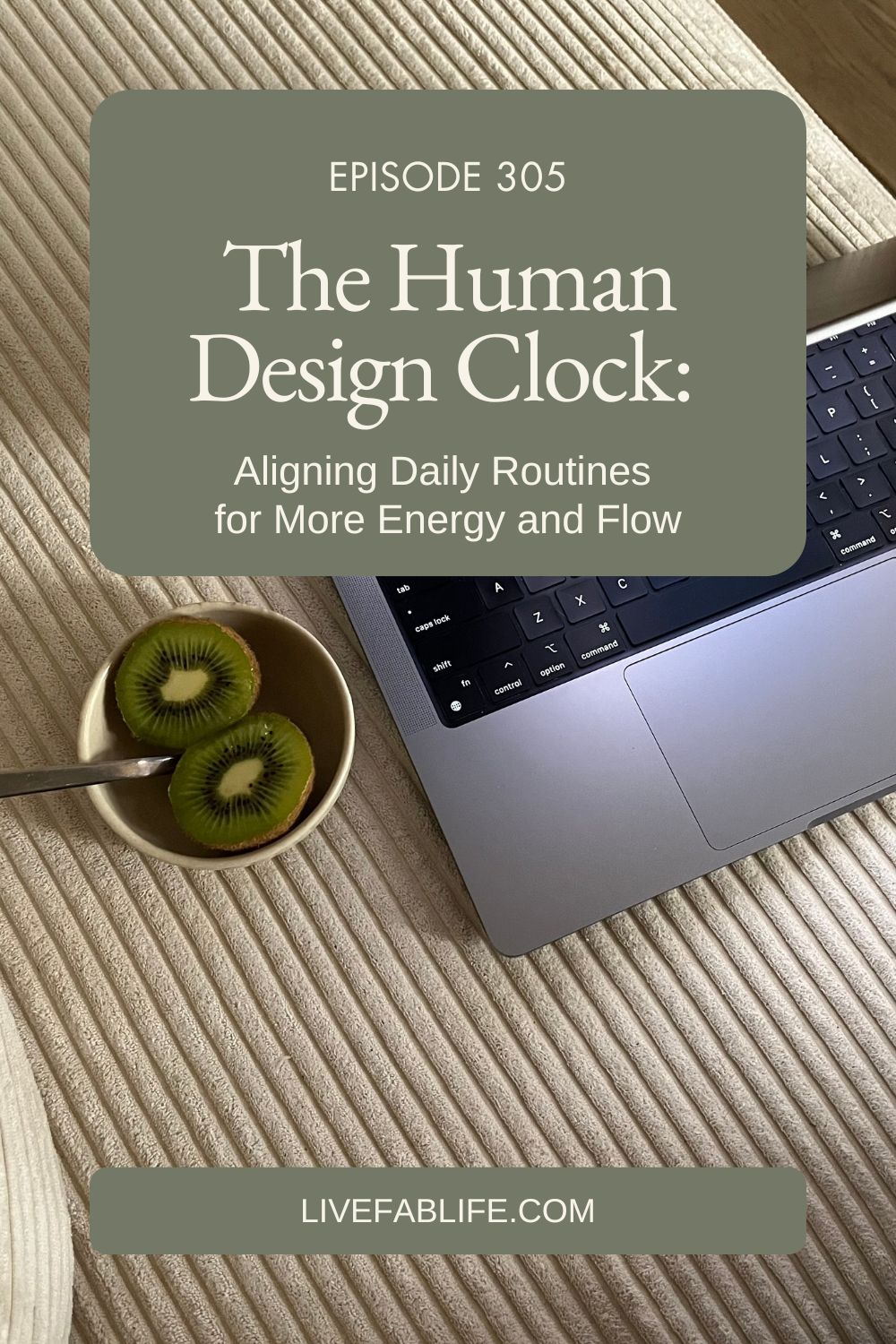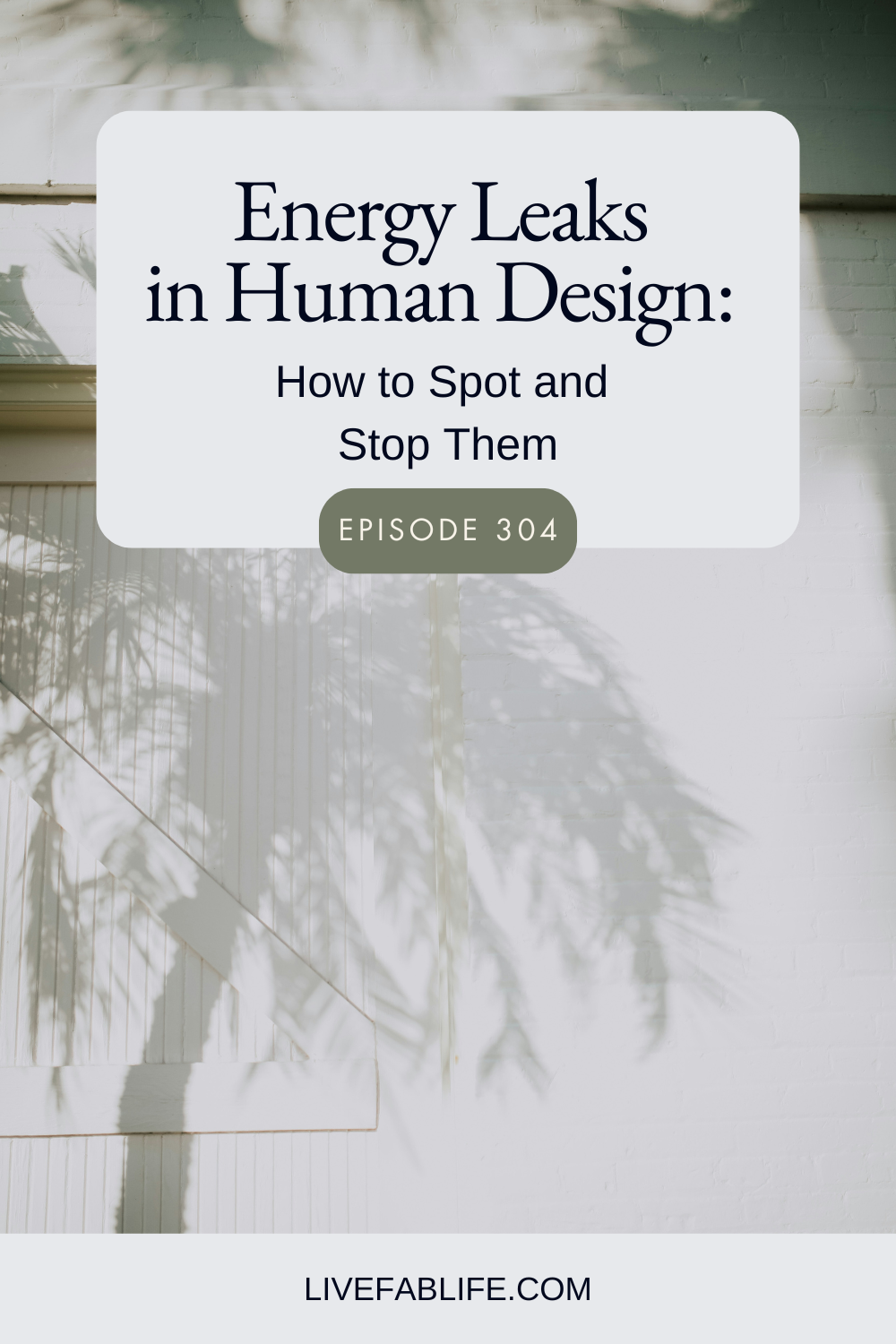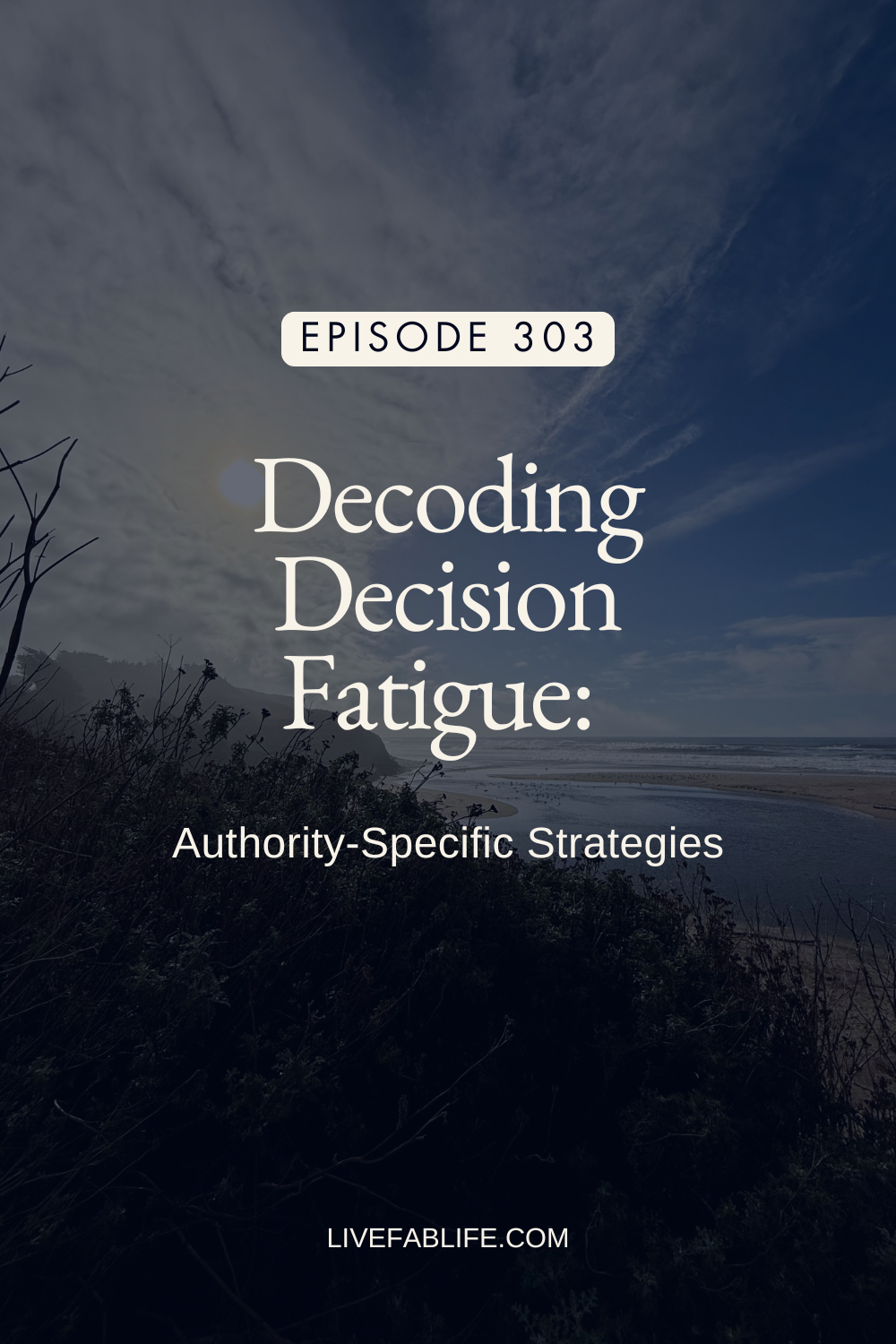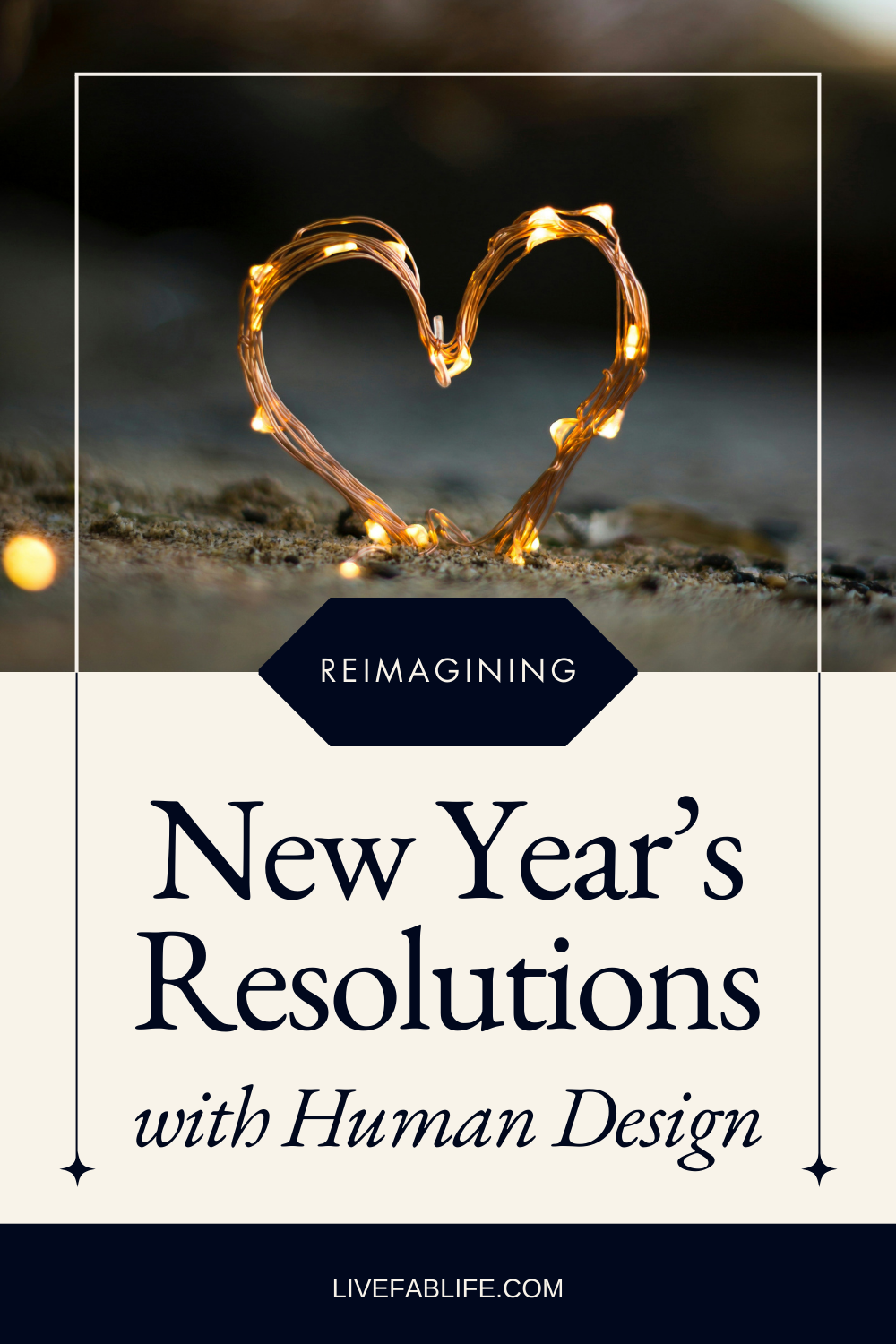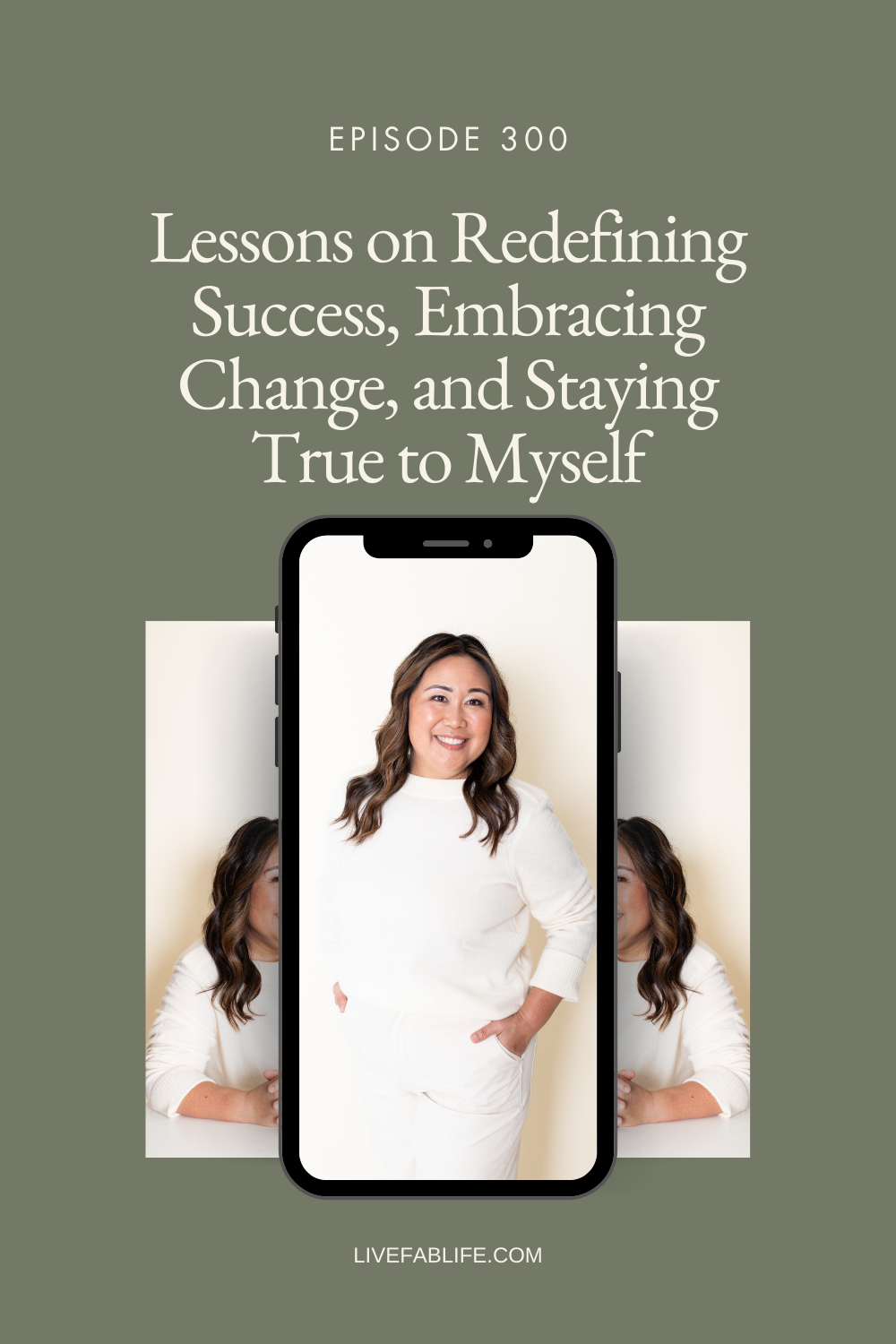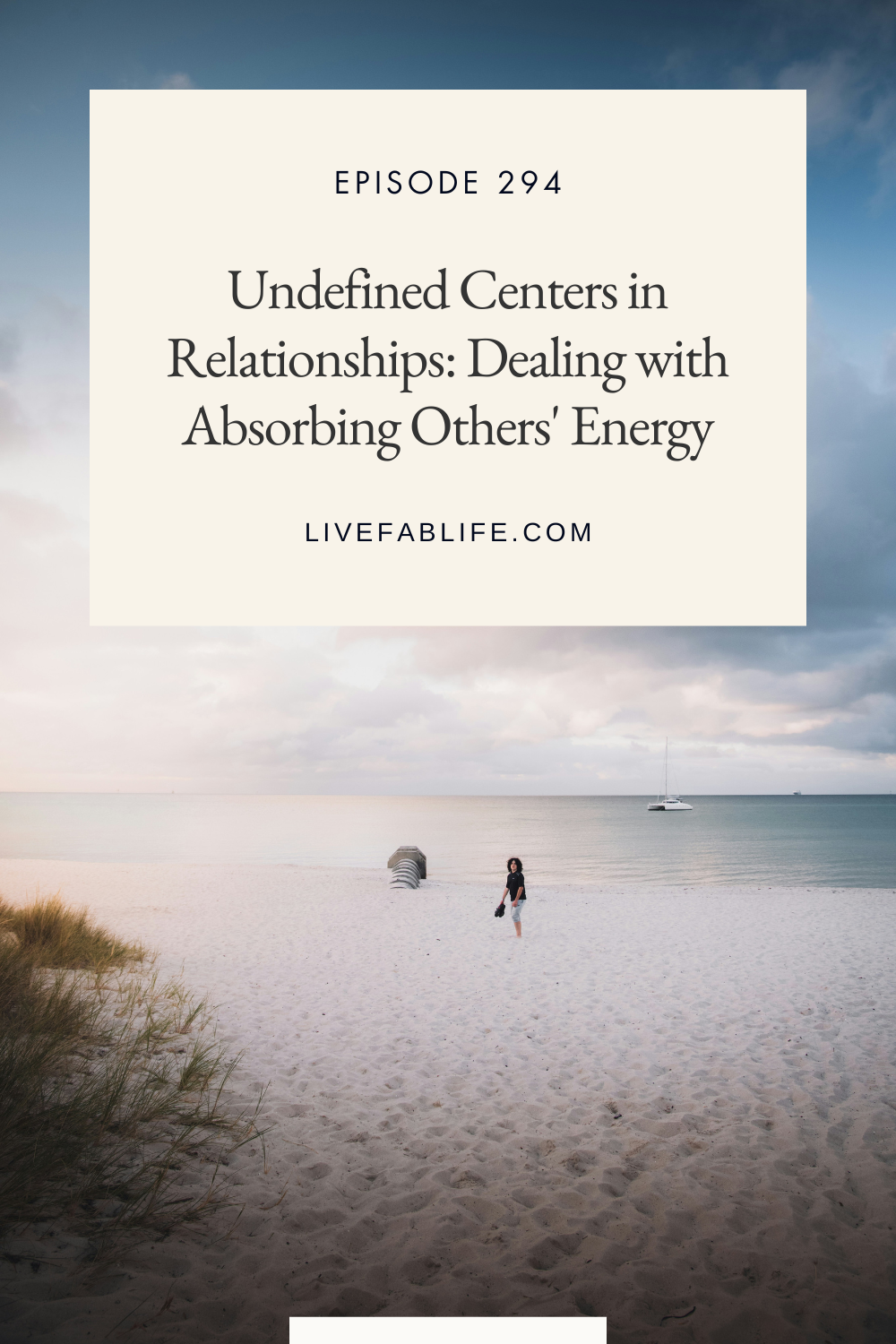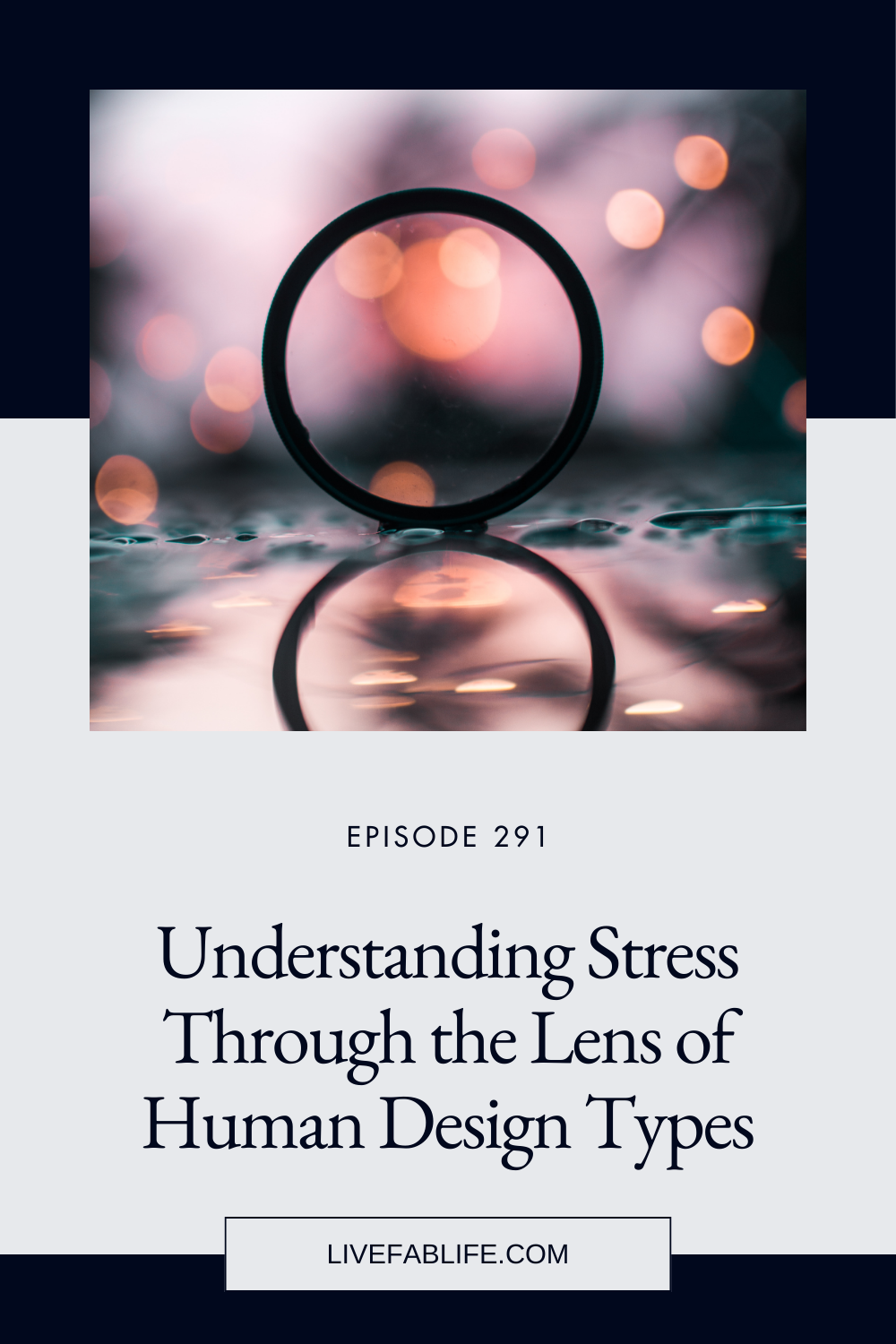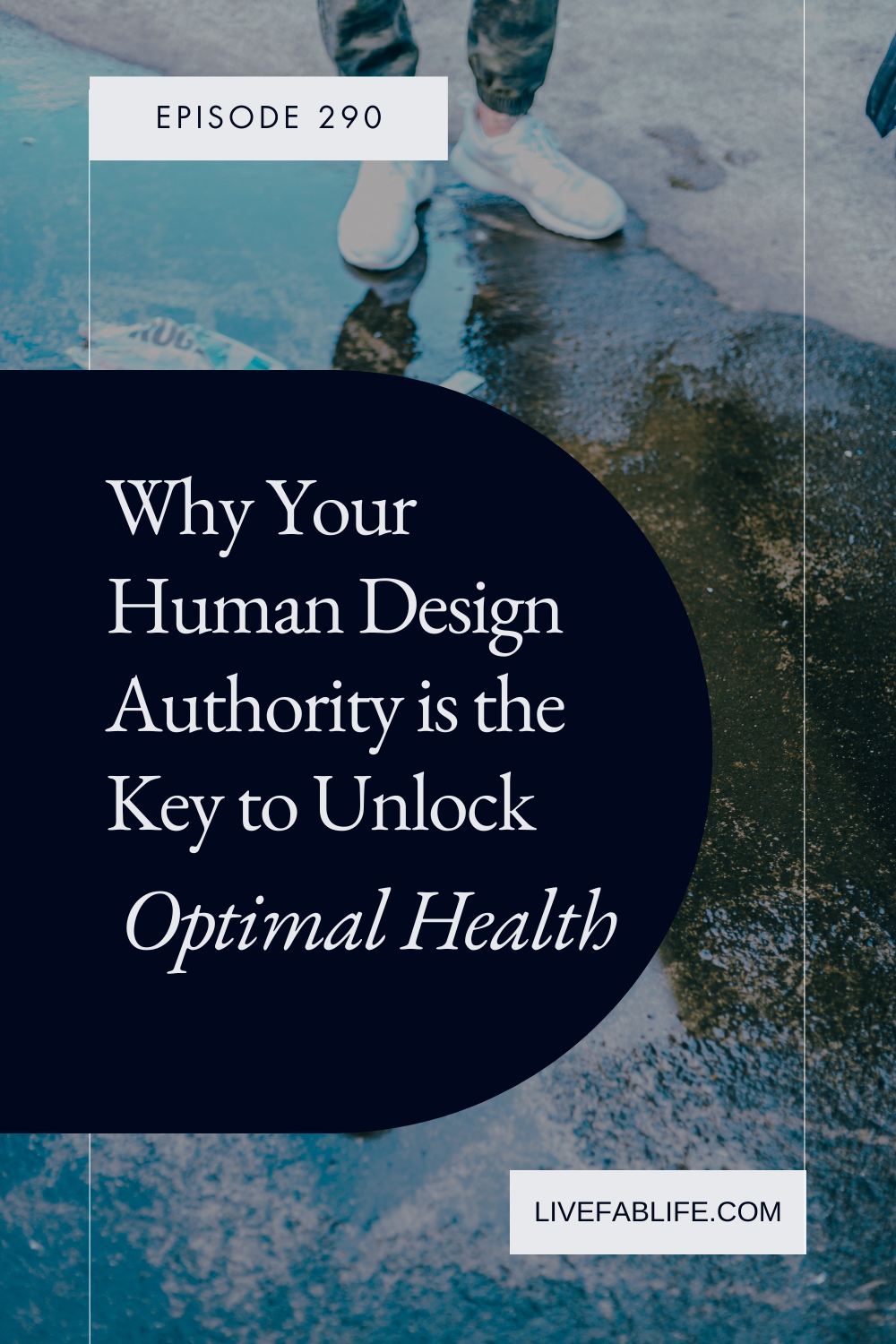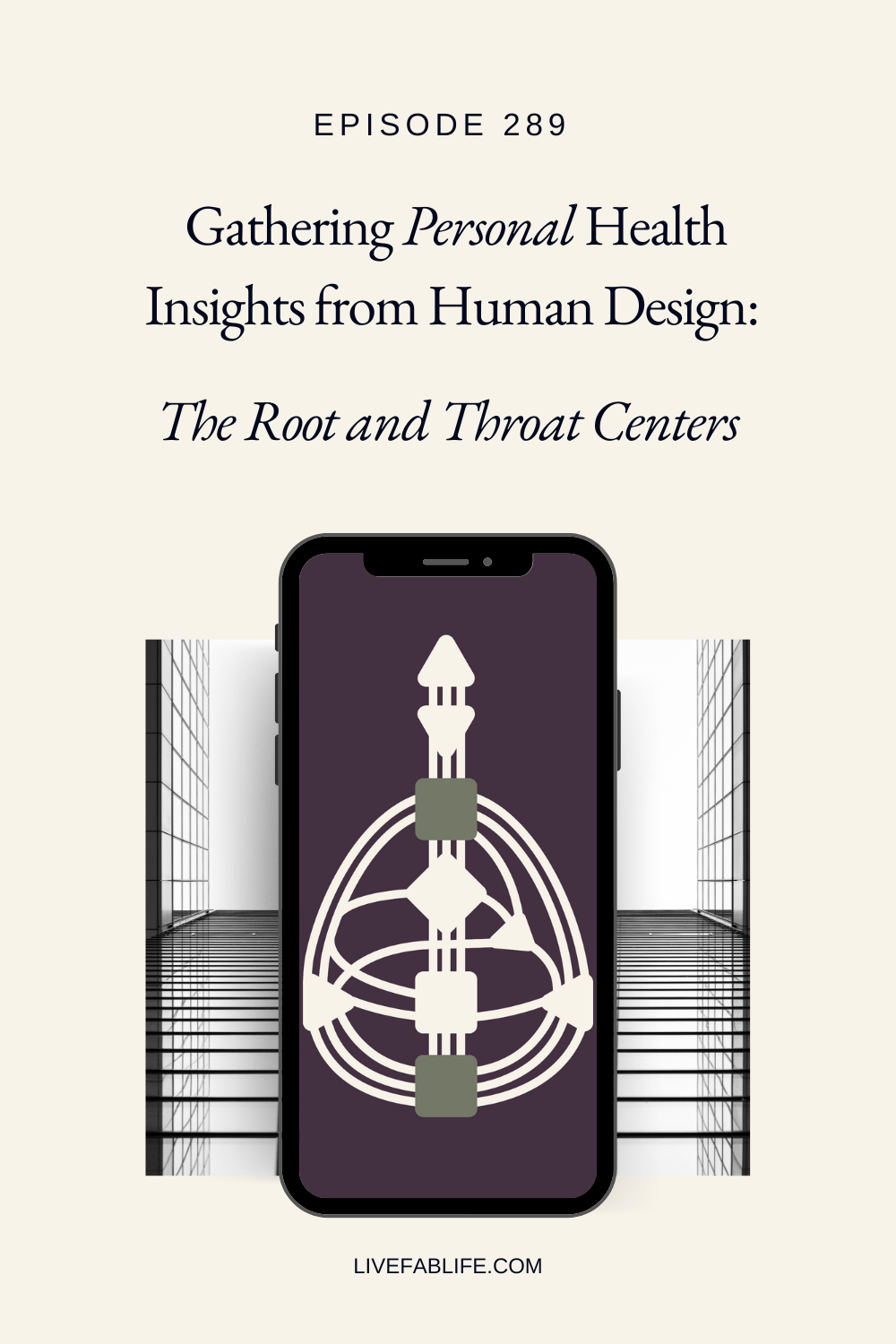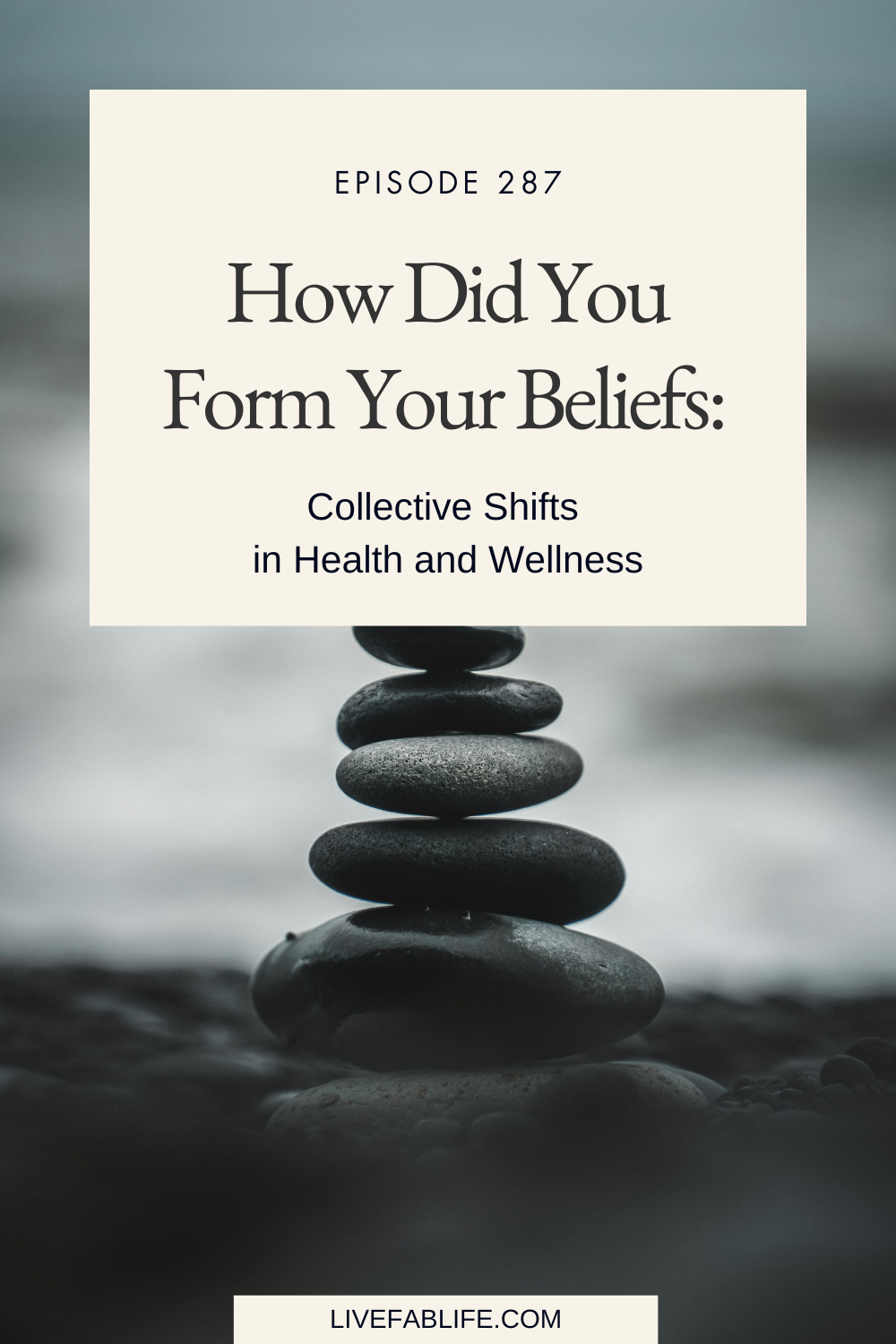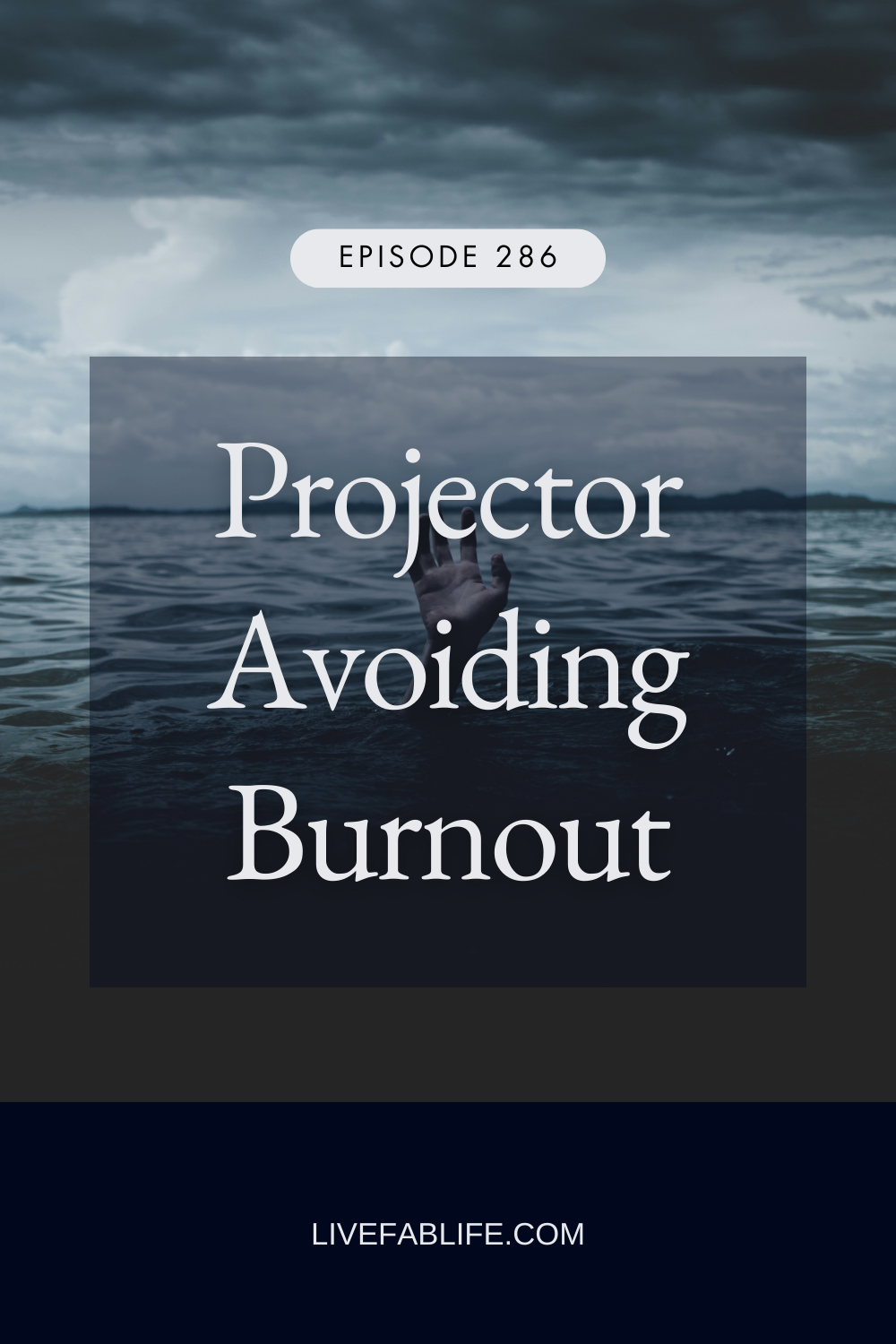Episode 252: Human Design at Work with Kaitlin Meek
In this episode, I’m joined by Kaitlin Meek. Kaitlin is a Strategic Partnerships Manager at Culture Amp, responsible for building relationships with new business channels. I met Kaitlin last year when she hired me to deliver a Human Design workshop to her team.
You’ll hear Kaitlin and I discuss:
How she introduced Culture Amp to Human Design and build interest and excitement for it
How learning about her 2/4 Projector design transformed how she’s increased her productivity and success at work
How she’s able to work with her Strategy (Waiting for the Invitation) and still be successful in a revenue-producing role
And we reflect on the question, “Can you be self-actualized at work?”
Listen to the Episode:
“We work in a paradigm of trading our time for money. It will be a while until we’re not in that paradigm, so how do we get the most out of that and feel our best? Human Design is the perfect system to get the most out of ourselves and the most out of the people we work with.”
Read the Transcript:
Naomi Nakamura: Hello there, my friend. Welcome back to The Live Fab Life Podcast. I'm your host Naomi Nakamura and I’m so excited to share with you my conversation today with Kaitlin Meek.
Kaitlin is a Strategy Partnerships Manager at an organization called Culture Amp. In her role at Culture Amp, Kaitlin is responsible for building relationships with new business channels. As a leader, her primary objective is to affect positive change in the workplace that moves business and ultimately moves the world forward. She has held several marketing and business development roles in a variety of different industries including tech advertising, product design, market research and media.
Outside of Culture Amp, Kaitlin is part of a prominent female-led coaching group that's focused on sacred ceremonies. She's extensively trained in energy work, communication, and leadership principles via several different modalities and programs like Chi Nei Tsang, Landmark Education, Wayfinding, Divine Alchemy Academy, InnerGuidance Institute, and and how fun is this - Surf Therapy!
Using her training, as well as her own profound experiences in ceremony, Kaitlin provides grounding experiences and loving support to all those who are hearing the whisper to expand their consciousness and their hearts. Just saying that already makes me feel so nurtured. When not working, you can find Kaitlin playing in the ocean and watching sunsets in sunny San Diego.
I met Kaitlin several months ago when she hired me to deliver a Human Design workshop to her team. It really wasn't on my radar to deliver Human Design workshops in a corporate setting, but when Kaitlin reached out and asked if it was something I offered, I thought, “Well, there's no reason not to offer it!”
It turned out to be one of the best experiences I've had thus far as a Human Design teacher. So, I invited Kaitlin to come on and share with you how she was able to introduce Human Design, not just to her immediate team, but to her larger organization, and not just introduced, but to have Human Design be impactful in her workplace, how she built interest around it, and how she got everybody excited about it.
She also shares how learning about her design transformed how she's able to increase her productivity and her success at work.
And this is the best part of our conversation. I mentioned that Kaitlin works in business development. For those of you who might not be familiar, it’s essentially a revenue-producing role. It is a sales-natured role. And Kaitlin is a 2/4 Emotional Projector - a Projector in a sales role.
Those of us Projectors, we struggle with our Strategy of Waiting for Invitations, especially in such an outreach of a role like business development and sales. So, Kaitlin shares how she successfully does this, every single day at her job, how she works with her Strategy to find success in a sales role.
This is such a fantastic conversation, so, without further ado, let's get to the show.
Hello, Kaitlin, welcome to the show.
Kaitlin Meek: Thanks, Naomi. So happy to be here. I’m so excited to catch up with you again. It's been a few months, but I know that we’re about to have a fantastic conversation. I know time has flown, but I'm so happy that we get to chat, and this is one of my favorite topics, so I'm really honored that you asked me to join.
Naomi Nakamura: I couldn't think of anyone better to have this conversation with!
Kaitlin Meek: Oh, so sweet! Well, I'm excited to dive in.
Naomi Nakamura: Yeah, we have all these good things to chat about. We do so tell us, introduce yourself to the listeners and tell us who you are.
Kaitlin Meek: Great. Well, I’m again, so happy to be here. My name is Kaitlin Meek. And instead of just sharing exactly what I do for a living instead, I'll just say that I'm a self-proclaimed mermaid, who lives in sunny San Diego! I really love to spend my time in nature, especially the ocean and I love hosting cacao ceremonies for friends. I also volunteer with a wonderful nonprofit doing surf therapy and what I'm extra passionate about is raising consciousness in the workplace.
But professionally I do business development for Culture Amp which is an HR tech company based in Melbourne, Australia. We collect and analyze feedback across the entire employee experience.
I look after the partnerships in North America. What that means is I help create different revenue streams for our business.
Naomi Nakamura: So, when I hear “revenue”, I hear “sales”, which we’ll get into a minute. But before I lose my train of thought, what’s a cacao ceremony?
Kaitlin Meek: Yeah, let's talk about that. Cacao originates from the cacao bean.
Naomi Nakamura: I have it every day on my smoothie.
Kaitlin Meek: Do you really?
Naomi Nakamura: I do the powder and the nibs.
Kaitlin Meek: Oh my gosh, it’s so tasty, quite bitter, but tasty. It’s a non-psychoactive plant medicine. And what it really helps to support us in is creative energy, connection, inspiration. And I also have it every morning. Funny enough and we'll talk about this, but learning about being a Projector helped me to really create a really consistent morning routine. And what that includes is having cacao every morning, so love that you brought that up.
Naomi Nakamura: I literally have it every morning, I have for like 15 years.
Kaitlin Meek: Oh my gosh, how special? Have you ever had cacao on its own?
Naomi Nakamura: Like as hot chocolate? Any type of drink? I have.
Kaitlin Meek: Yeah, exactly. Did you feel anything afterwards or during?
Naomi Nakamura: I'm gonna have to experiment with it with that in mind. I just know that it makes me feel good. I know it's an excellent source of magnesium.
Kaitlin Meek: Really good, yeah, and iron.
Naomi Nakamura: I hate it when I'm traveling because it's not available to me, at least in the form that I'm used to having it every day.
Kaitlin Meek: Yeah, totally. Well, I love that you felt some great effects that is absolutely a benefit. It's feelings of blessed connection. So that's amazing. And I think it's really good to have before work - I love that you incorporated in a smoothie. But if you drink it just on its own, it's really supportive for like, I mentioned creativity, but also focus and improved mood. And I'm not going to get the science totally right, but it gives you a different kind of energy than caffeine, so, it gives you some like boost of motivation that is not going to deplete you. So happy to get some info for the show notes about that.
Naomi Nakamura: Or maybe we have another episode on that later.
Kaitlin Meek: Yeah, clearly great for brain function.
Naomi Nakamura: Yes, totally. Okay, so this is a conversation about Human Design at work. So, tell us, you've alluded a little bit, but what’s your design?
Kaitlin Meek: That's right. You may have heard I'm a Projector and I'm a what I say is a 2/4 Projector.
Naomi Nakamura: So, the 2nd line and the 4th line,
Kaitlin Meek: Yes.
Naomi Nakamura: I ask everyone who comes on my show - How did Human Design come into your life?
Kaitlin Meek: Great question. I have to say, I don't remember who introduced it to me or where I heard it. I remember it was sometime in late 2018, or 2019, but it really wasn't until April 2020, that I got motivated to have a formal reading. I remember it was right when the pandemic hit, and we were settling into it.
I was like, “I need something” and I have to say, it absolutely blew my mind. I truly have never felt more seen or gotten in any other context. I was pretty immediately hooked and wanted to let other people know about Human Design, but also, bring it into the workplace, which is so perfect.
Naomi Nakamura: Actually, our stories are pretty the same. I first heard of it in probably about 2018, but I didn't have a first reading or really get into it until early in the pandemic.
Kaitlin Meek: Oh my gosh, you're kidding, and look at your business now! Wow, that's amazing. I actually didn’t know that about you.
Naomi Nakamura: Yes, I had a few friends who had readings in 2018 and they told me what it was, so I looked it up and I'm like, “I don't know, what is this graph chart?”
At that time, the Enneagram was in, and you could look up your Enneagram and find out what it is.
But in Human Design, you have this chart of this figure and you're like, “I don't even know what this means. I can't even look at it and interpret it at all!”
And then I just kind of put it away and in early 2020 I came back into my life.
Kaitlin Meek: Oh my gosh, I love that. I'm actually curious, did you take a course, or did you have your own reading?
Naomi Nakamura: I had my own reading. And then the person I had the reading from did a course to teach other people. It was really focused for people will want to learn more about human design, but those who already had establish businesses like coaching practices who wanted to incorporate it, so, I did that later in that year.
And I'm a 1/3 so I'm always a student trying to learn more and conversations like this are one of the ways that I learn. Long-time listeners will know that I've have subject matter experts on the show but I also like to have what I call “real people” and share “real people's stories” because I think in some ways those are more impactful than the subject matter expert conversation.
It's not that you're not a subject matter expert, but you know what I mean? But we're definitely having some real talk here.
When you first learned about Human Design, what was it that just landed with you?
Kaitlin Meek: I think, in really simple terms, it was like, wow, full permission to be myself, you know? What I realized, and what I appreciate from the Human Design reading was that we live in a Generator-world, pretty much, sometimes an MG world, but mostly a Generator world.
I realized, wow, I've been really, really trying to force myself into that. And to see, oh my gosh, to understand that I'm a Projector and to have again, the permission of like, it's good to be this, and here are the ways to actually live this out to be in my highest alignment. It was refreshing. It was relieving. I was like, Oh my gosh, okay, I don't have to force myself, and these are my natural gifts.
It's hard, right? In the workplace, we need to work 9-5 or 9-6, some people 8-6, I mean, gosh, in some industries, even later than that, and you have to work the whole time. And there's all these other conditionings and programmings that we have.
And what Human Design does is so generously acknowledge everyone's individuality. It creates inclusion and permission.
Naomi Nakamura: That's the word Yeah, you're not a square peg, trying to fit yourself into a round hole, or understanding who you are and fit yourself into. It's not the best framework that society has. But it gives us tools of how we can work with it.
Kaitlin Meek: Well said, and I think I've talked about this in the past - we work in a paradigm of trading our time for money, right? And so, it's going to be a while till we're not in that paradigm. But how do we get the most out of that and feel our best. I think Human Design is the perfect system, well, to get the most out of ourselves, but also to get the most out of people, we work with - our colleagues.
Also, how our employers, the organizations that we work with, or work for, get the most out of us.
Can you imagine? This is what I'm standing for - a world in which we all get to share the similar language and acknowledge each other for our true energies and our true gifts and not trying to each other into the square peg. Right?
Naomi Nakamura: Right. Like, we all know that we're different - why are we trying to be the same?
Kaitlin Meek: I don't know. Why do we?
Naomi Nakamura: Okay, so you learned about Human Design but really started embracing it in 2020. How did you start to bring it into work? Because you’re one of the few people that I know who work for an organization, meaning, you don't primarily work for yourself, you really embrace Human Design, and you really brought it into your workplace. So how did you start that?
Kaitlin Meek: Well, I kind of snuck it in to be totally honest. I really acknowledged my Human Design and practicing it. That's what allowed me to sneak it in.
I first shared Human Design as a concept in Culture Amp’s sales kickoff in January 2022.
Naomi Nakamura: That's amazing!
Kaitlin Meek: Yeah, so good.
Naomi Nakamura: So, for those who aren't familiar with that whole corporate world, what is the sales kickoff?
Kaitlin Meek: Great, thank you for asking. A sales kickoff is where an organization gathers all of their customer-facing employees to galvanize them around the year ahead.
Naomi Nakamura: So, it's a lot of the new fiscal year try to hype up the new year
Kaitlin Meek: Very motivational time to bring connection and a vision for what is ahead for that next year and get people kind of rallied around “Let's go sell whatever I'm gonna go sell.”
On a sales kickoff, there are customers advocate. So, a lot of times your customers come in and share their love of your product or your service, or you'll have your product roadmap being shared so you can really get excited about what to tell your customers.
It's a whole day so to break it up, “wellness sessions” were created. We did this all virtually given that it was still very much a remote world - we were still in the COVID season at that time.
I was asked to lead one of the wellness sessions. It was just a little break that people had so you could either leave your computer or you could stay on the computer. There was a really fun one with a DJ set.
Naomi Nakamura: I love that. Why haven't we done that for our virtual meetings yet?
Kaitlin Meek: It's so good. I mean, dance parties, I think someone was showcasing live streaming koalas or something entertaining. And then mine was actual personal wellness and I titled it, “Tending to Our Inner Nature”, and really the lens through which I designed the session was about, “What do I personally appreciate it. What would I want to learn in a wellness session? But also, what are the primary tools that have supported me in my sales career at Culture Amp?” At the time, I'd been there for five years, I'm going on about seven years, so a lot to go off of.
One of the three concepts that I wanted to incorporate was Human Design because it’s personally helped me so much in my role, and in having more energy at work, feeling more recognized, feeling more productive. So wanted to bring that in, I just felt like it'd be fun. It's kind of a way to mix up the day.
Everyone loves to find out what their loves Myers Briggs is, what Harry Potter House or are you in?
Naomi Nakamura: I'm Slytherin, by the way.
Kaitlin Meek: I am. I was a little offended at first.
Naomi Nakamura: I love it.
Kaitlin Meek: Okay, I love it, too.
Naomi Nakamura: It’s self-preservation.
Kaitlin Meek: Yeah, exactly. Sure enough, folks, I absolutely loved the Human Design portion and it was so fun to get Slacks, which, for folks not necessarily on the computer all day like we are, Slack is an internal messaging system.
Naomi Nakamura: It's like instant messenger.
Kaitlin Meek: I got probably a dozen and a half Slacks learning what everyone else was, what energy Type was amazing - starting to build common language with about 12 people?
Naomi Nakamura: That's really good,
Kaitlin Meek: Really good, I know. It was really special to start to see acceptance and excitement around something that I personally found so beneficial.
So that's where I first introduced Human Design - got a lot of fun reactions there. I’m also happy to share the wellness session if anyone is keen to see it.
Naomi Nakamura: You had your reading, you learned that you're a Projector, how did you start to bring that into your workday?
Kaitlin Meek: Yeah, great question. I realized it shifted so much in my day I feel like this could be a really great technique to bring in for other folks.
But for me, personally, how I started to shift my day was when I realized that I could have permission to take rest and breaks. That was revolutionary. I mean, I don't know about you, but I'm a child of the 90’s. School was everything. There was so much pressure to perform and to get into a good college.
So, when you move into the tech world, eight hours a day is the minimum?
Naomi Nakamura: Yeah, absolutely. I mean, the expected minimum, I should say.
Kaitlin Meek: Well said, yeah, and there's no permission to do anything other than that. It's similar to how we were brought up with school. You’re forced to work and working hard is a virtue and it can be really revolutionary to take breaks. So, it's personally shifted how I scheduled my day.
Naomi Nakamura: I was going to ask; do you use Outlook? We use Outlook, and I just block time out.
Kaitlin Meek: I absolutely block timeout for not just breaks but for true rests like going on a walk or making myself a cup of cacao or catching up with a friend. I need that diversity in my day, to really feel energized.
So, how I audit my week, or what am I going to say yes or no to? What are the things I need to have in my morning ritual, and even my evening ritual, too. That did not happen straight up until I learned about my Human Design because I need that permission. It didn't even dawn on me that I could decline meeting invites.
Naomi Nakamura: I have a dog so I schedule breaks during the day so I can take her out for a walk. I can actually decline that 7am meeting, if like I have four other days of 7am meetings or I can use that propose alternate meeting time.
Kaitlin Meek: Perfect technique.
Naomi Nakamura: Yes, absolutely.
Kaitlin Meek: Something I really valued, and we haven't talked about this yet, but in the session, you led for my team was the big takeaways for different energy Types for the Projector.
It's prioritizing breaks, right? Making time for renewal within boundaries, too. And I don't love that word, to be totally honest, it's like limitations.
Naomi Nakamura: Expressing our love for ourselves and others is knowing how to say yes and no. And that no to that 7am meaning that is love for you and not for the other person. Well, it's also I think, learning to say yes and no. We totally take this for granted, but it's one of those things that it's a skill that we need to learn that we are taught, we're conditioned, but we aren't taught how to say no.
Kaitlin Meek: Absolutely. It's revolutionary. We're now in a cultural conversation where that's becoming permissible - that's very popular, being confident and a lot of that is around shedding the identity of people pleaser, which now we're getting into more of the masculine / feminine dynamics but as women and Projector women -
Naomi Nakamura: For me, I learned that by saying no, I'm also saying yes, yes. Because by me saying no, there's going to be so much more better things that come out of that.
Kaitlin Meek: Yeah, that's exactly right. Totally love that.
Naomi Nakamura: Well, that was a little shift, but also a part of like embracing rest. And again, boundaries, limitations, whatever you want to call it. It's protecting yourself about what's best for you right now. And what's not best for you right now?
Kaitlin Meek: Definitely.
And anyone listening that hasn't had their chart read one thing, there's multiple things in the chart, like we've mentioned earlier, in our chat, there's so many lines and centers and all these things. But one thing is the Profile Lines
Naomi Nakamura: The first line, is how you see yourself, your conscious and the second line is your unconscious and how others see you. That's I keep it straight in my head.
Kaitlin Meek: Yeah, I'm a 2/4.
So that first line, what I sussed out from learning about my 2nd line is that I need alone time. And then my 4 line is that I really thrive in community. And so those seem dichotomous, right? They seem contradictory, almost. But I can work with both now.
It's also how I structure my day. I can't have a day at work where I'm not in connection with others - that's not fulfilling a certain aspect of myself. But I also can't have a day where I'm not having any alone time.
That was really helpful to understand how to best structure my day and feel good at the end because I think what we all want to avoid is burnout.
Naomi Nakamura: Burnout can come from a lot of different things. There's the surface level things that create burnout. There's also the psychological things that create burnout. But I think using your energy Type is one of the best ways to reduce burnout.
Kaitlin Meek: Absolutely.
Naomi Nakamura: So, you mentioned the session that I did with your team.
Kaitlin Meek: Let's talk about it.
Naomi Nakamura: It was so amazing, because we had zero connection before that email showed up in my inbox. I get pitched to a lot and a lot of times I just hit delete, but you were asking, “Hey, do you offer this? And I was like, I don't, but here's no reason why I couldn't.
Kaitlin Meek: I love that.
Naomi Nakamura: I was just like, Well, how would I envision this? So, I proposed my idea to you and it happened.
Kaitlin Meek: I just love that you were a yes. Even though you hadn't been a yes, in the past. I mean, it was so divine. It was an invitation.
Naomi Nakamura: And we had a prep call beforehand and I felt so seen - not only the invitation, but also energetically, we were a match.
Kaitlin Meek: We were totally a match. I really thank you for making me feel safe and bringing this work that I'm so passionate about. And frankly, it's worked so well. For me, I really want people to get it. And you were just so generous and understanding and compassionate towards what I cared about. And you really did end up bringing that to the session.
And for those listening, as I mentioned earlier, I lead partnerships, I look after all of North America, but we're a global team. So, I've got four other folks on my team and in geographies. It was the first time that we met in real life. It was amazing.
Naomi Nakamura: And you we're in Australia.
Kaitlin Meek: And we were in Australia. Yes. We were very fortunate to all meet in Culture Amp’s headquarters in Melbourne, and we had our Human Design session with Naomi on Day One of meeting.
Naomi Nakamura: Wait was that the first time you all met in person?
Kaitlin Meek: It was the first day.
Naomi Nakamura: I did not know that.
Kaitlin Meek: We had met in the morning; we had a breakfast.
Naomi Nakamura: And this was part of your sales kickoff for the new fiscal year?
Kaitlin Meek: This actually was part of a team kickoff.
Naomi Nakamura: It was part of an off-site.
Kaitlin Meek: It was an off-site. Exactly. Yeah. So, it was the first time we all met. And what we were doing was planning for the next fiscal yea and I knew, having been at Culture Amp for so long, and having some facilitator background, I knew it was critical to come together in a more meaningful way.
I thought about doing some icebreakers, I thought about other modalities we could have brought in. But I don't think there's anything better than Human Design.
I did ask everyone to check out their profiles before, so there was some curiosity. There was some interest - people were like, “Oh, I want to learn more. What does it mean that I'm a Projector?”
So, I had done a little bit of teasing, but then when we all met that day, for the first time, and then to come into that session with you. It was amazing.
I mean, so much clarity about each other, about ourselves, about our team dynamic.
And one thing I didn't mention was that we had already been working with each other, maybe somewhere from between 6-9 months, working with each other virtually. So, we had a lot of fodder and a lot of experience to go off of but nothing was quite like actually learning about each other at this level.
Naomi Nakamura: That was an amazing session, I would have to say, yeah.
Kaitlin Meek: Do you remember when my manager got really emotional learning about his Profile Lines?
Naomi Nakamura: I do, because for one thing, he was the only non-Projector in the group.
Kaitlin Meek: That's right. Yeah, we had four Projectors and one Manifesting Generator, right?
Naomi Nakamura: Yes and he was a 6/2.
Kaitlin Meek: Yeah, it was a pretty powerful moment.
Naomi Nakamura: Because it was really impactful in a way that had nothing to do with work. So, it was a testament about how Human Design can really have this effect on not just work, but it translates to everything.
Kaitlin Meek: It really does. And we're getting to something that's personally of interest to me and something I think about a lot. I think we're in a time where there's a cultural conversation happening around personal development and personal inquiry - it’s very popular today.
I know, for my parents and my grandparents, they never talked about, Who am I? Why am I here? What is my purpose?
Naomi Nakamura: Well, and there's also this, “What's appropriate for work and what's not” conversations?
Kaitlin Meek: Absolutely. I think what wasn't appropriate five years ago is absolutely appropriate today.
Actually, I have a funny story about that. At my first job out of school, I wanted to post motivational quotes every week. The CEO of the company I worked for said, “That's not our brand.” Keep that to yourself, basically, and that's really where I started to develop my curiosity and my passion and my true yearning for healthy work cultures. And not to say it wasn't unhealthy. It wasn't, it was just different. It was different. It wasn't really my vibe.
Today, that's all I see on Culture Amp. Slack is motivational quotes; you should see some sales folks. They're posting motivational videos from YouTube; people are sharing so much personal development frameworks and great concepts from their coaching sessions that they have with their own coach at Culture Amp. It’s really, really fun to see the shift. So yeah, what's appropriate today is kind of new, and this conversation about getting to know yourself.
We talked a little bit about this, you and me, Naomi, a while ago, can you be self-actualized at work? And I think Human Design is a really accessible pathway to achieve that.
There's so many modalities for that, right?
Naomi Nakamura: You have Slack. I’m just gonna go ahead and say it - I work at Cisco Systems. It's a very large tech company. Disclaimer - my views are my own. If anybody wants to look me up on LinkedIn, you'll see where I work.
We were having this conversation before we hit record, so like you, except we don't use Slack because we have our own tools, but there's also a group that someone within my business unit created - a room specifically for motivational quotes - daily inspiration.
There are over 800 people in that room. She did it on her own because people likes the energy she brings, and she always has something motivational, inspirational to share every day. She just posts a graphic or a meme or something. It grew organically, honestly, I think it grew by word of mouth, but there's 800 people in that room.
Yeah, as an organization, our CEO and our head of Human Resources will say there’s this shift happening. We have speakers that come into our company on a quarterly basis, people like Brene Brown, and Michelle Obama - these people are coming in and speaking, obviously, they're not speaking about tech, they're not speaking about revenue numbers, they're not giving us the Stephen Covey or Dale Carnegie speech.
These are conversations around self-actualization, self-awareness, and how that can help us to be not just better at our work, but also how we can be better humans to each other, because that's only going to translate to better output.
Kaitlin Meek: Yeah, you know, there's a big conversation that Culture Amp about work-life balance. It's not work-life. We're living life. Work is a part of life. You said something before you started recording what you like is lifestyle design.
Naomi Nakamura: Yeah.
Kaitlin Meek: There's no reason why that has to be a different than a work designer at work.
Naomi Nakamura: Yeah, it's just one life.
Kaitlin Meek: Absolutely.
Naomi Nakamura: What I was gonna say about that, now that you've introduced your Human Design to your immediate team, and your manager had this really just amazing experience, especially about learning about the 6yh line –
If you're not familiar with the 6th line, it’s known as the “role model.” Essentially, there's three cycles of life for the 6th line and as you get older, you start to become the role model that you wish you had.
I'm not kidding you - in every single reading I've done with a 6th line it’s always super emotional for them because it's literally transformation. lt's being recognized for them; they're being seen.
And for whatever experience they had in their early years that maybe wasn't fitting of the role model they had, and how they're transforming and evolving to become that, unknowingly, in alignment with their Human Design.
So now that you've introduced Human Design, especially to your immediate team, what kind of impact has it had on your group dynamics?
Kaitlin Meek: Yeah, it’s been fun. I think there's a whole new level of conversation that we're able to have, because as you mentioned a little bit earlier, it provides a common language.
So we're able to be like, “Okay, well, because you’re Projectors….you can see things from a higher level where as our manager, as we mentioned earlier, is a Manifesting Generator.
Naomi Nakamura: So you’re like, if you want stuff from us, you have to invite us.
Kaitlin Meek: Yeah. Yes, so we're using the buzzwords that we learned from the session with you, which is so great.
But more than anything, I think we all took a lot of notes in the workshop. And I think in talking to my team and prepping for this chat of what's it meant to you personally, everyone said that they have more empathy for the other.
And that is, wow, that's such a gift.
And then I think we may edit the recording here, but what I had forgotten to say was the work-life balance - it's all life.
I think the biggest takeaway for my team, everyone acknowledge that they've also brought Human Design into their personal relationships. I did not expect that when I set-up this session with you.
Now the fact that it’s improved, relating to their loved one is massive, and learning about, “Okay, how can I be a better partner based on the fact that my partner's a Generator or the fact that my partner is also a Projector?”
That level of connection and compassion and more ease that flows because we understand each other better is so big.
Naomi Nakamura: Yeah. And it even doesn't matter if the other person knows about Human Design, you can approach the relationship with love, and they're going to immediately feel it because it's going to resonate with them - how you treat them, you're going to be speaking their language without them even knowing it.
Kaitlin Meek: Yeah, totally. Isn't that what energetics is anyway? You don't have to know it. You don't have to say it. It's who you're being and how you treat others. So, I love that.
Naomi Nakamura: That's so true. Okay, so you’re a Projector and you’re in a sales role. So, your Strategy is to “wait for the invitation.” I know this is something that trips up a lot of Projectors.
When you first learn your Strategy, how did that land with you? And then how do you find success in working with your Strategy?
Kaitlin Meek: As someone who is in a revenue generating job, I feel like well….
So, you're a Projector, and you've read for hundreds of people at this point, so you've probably had the very common reaction of like, being really upset about having to wait and I was upset.
But then also, I'm like, it explains a lot.
Naomi Nakamura: Yeah, it totally does, doesn't it?
Kaitlin Meek: And I have to be honest, I felt really insecure when I first read that, or first was told that that was my Strategy, especially in a revenue generating role.
You have to be a hunter; you have to be proactive and take initiative and be pretty forward and create a lot of the activity that haven't been for the role.
What I learned is, I can totally still take action, it’s not a passive thing to be. And I have to really acknowledge you for this, Naomi, because no one had said it better to me than you in our session.
But it really is to first sense and have that tap into our sensing, which is one of our greatest gifts for all humans. Is there an opening for me in this conversation? Or in this opportunity? In this sales deal? Are they receptive to me? to the product I'm selling or sharing? Or in this case? In this partnership?
So, this partnership, if I sense it’s a “Yes”, amazing, I can go ahead and move forward?
Or I can even ask more questions so that they end up inviting me in or ask me, “How do we partner with you? versus me being like, “Can you partner with me?”
Naomi Nakamura: Exactly.
Kaitlin Meek: Right. But I realized, when I don't do that first sensing, that first understanding of receptivity, and it's my ask comes unsolicited, I do fall flat.
And so really tapping into my gift of being curious and asking the questions and asking for the invitation is incredibly helpful. So that's been one of the biggest insights.
Naomi Nakamura: You shared something with me in our notes about how you use other parts of your design to support the invitation process, and I have to tell you, it is genius.
Kaitlin Meek: Oh good.
Naomi Nakamura: I think it really demonstrates an advanced understanding of your design. I know you said, I'm not a total expert, but you are.
So, tell us, how do you use other parts of your design to work with your Strategy?
Kaitlin Meek: Yeah, well, I have to say I'm in no way an expert, I mean, I don't consider myself one.
Naomi Nakamura: I feel like you are. But that's okay, we're all learning. Well, I have the 48-16 channel where I feel like I never know enough. It's just you learn so much about yourself.
Kaitlin Meek: It is so affirming. It's unbelievable.
Naomi Nakamura: And it's affirming because it's not necessarily things that you didn't kind of already know. But it reaffirms, it does. What you know, is there.
Kaitlin Meek: Totally, we talked a little bit about this, but knowing my Profile Lines, so I'm a 2/4, really, really helps me in my role.
So that that 4th Line of thriving and community - my gift is networking. I never had the words for that. I also felt a little sheepish to claim that, but when I read my Profile in my Human Design reading, and it's my profile, it validated the roles I had professionally.
I've always been Biz Dev roles. So much of my success has come from who I am, that works in my network, it really has.
I mean, no joke. And it's funny because I'm not that active on my LinkedIn.
I really liked to stay in touch with folks, so during the pandemic, April 2020, actually might have been May, I started a weekly newsletter called “Three Things” that I sent to all of my old customers and some of my prospects at Culture Amp, and all the folks that I had met over my five-year tenure.
It was weekly on a Monday and some three things that was on my mind about the HR space, or about personal development.
It was such a beautiful way for me to keep in touch with my community and not be selling to them because I'm sorry, who's buying software in the middle of a pandemic?
Naomi Nakamura: Well, also, that was a time when we were all so physically isolated.
Kaitlin Meek: Yeah, totally.
Naomi Nakamura: It was genius to you to figure out a way which probably was just like, it wasn't even a strategy, not Human Design Strategy, but probably just a way that you thought of connecting with people.
Kaitlin Meek: Yeah, thank you. I was really missing that connection. And when I was reminded that so much where I thrive is in community, I was reminded of this quote, that I receive this kind of mantra of like, “the world shows up when you're out for other people”.
Naomi Nakamura: When you're in service to others. That's selfless.
Kaitlin Meek: It is totally. And I felt that, we've all felt that I mean, you were a service in your coaching business. And it's amazing when you're in the energy of giving back and being out for other people or a stand for other people contributing to others, much more abundance flows through so much work.
Naomi Nakamura: We feel better, we have more connections, more synchronicities, more magic.
Kaitlin Meek: Yeah. Think about what the opposite of that is like in the workplace, right?
Naomi Nakamura: We all know it, we all feel it, even without it being said, about that person who's just out for themselves, or who's only climbing the career ladder, or we all know a person from our workplace who's like that.
Kaitlin Meek: There's never good feelings about situations like that. Literally. I mean, they can be so impressive, because they are so successful. You're seeing amazing LinkedIn posts, or they're hitting amazing sales goals. Right. But in being around them, like you said, the energetics are off.
Naomi Nakamura: Yeah, totally.
Kaitlin Meek: It's been so interesting. That's one aspect that I've used around Profile Lines.
But then also, I really got the coaching around warm intros and using my network to get introductions, and that's a lot of planning for the invitation.
Naomi Nakamura: So yes, well, and also, the different parts of our design will really inform us of how to work with our strategy.
Kaitlin Meek: Yeah, it's been so supportive, and I don't have to effort as much, you know, so I'm suffering from burnout. But similarly, I remember there's another aspect of my chart. I think it's like my Root center.
Naomi Nakamura: Yeah, the Root center for me, it's all about, working under pressure.
I have an Undefined Root center.
Kaitlin Meek: Yeah. Same as me, too. So, if I try to operate as someone has a Defined Root center, it’s going to lead to burnout.
Naomi Nakamura: Yeah, it’s embodied by the adrenal glands. When you have an undefined Root center, you're going to do everything possible to make the pressure go away.
It's one of the two pressure centers with the Head being the other pressure center.
When I heard that in my design, the first thing I thought of was in school - the homework assignments I got back from the subjects I hated. I had a teacher literally write, “Haste makes waste” because I zoomed through it because I hated math. I just wanted it over, totally wanted to be done with it.
Haste makes waste. Undefined Root energy.
Kaitlin Meek: Yeah, I am actively in communication with my manager. My teammates know that I don't like to work under pressure. I'm a really good procrastinator and get stuff done under the time pressure but pressure from others or from a system, I crumble.
And so how do I create space and expansiveness and like the really being communication with my teammates about getting things done so that I'm not under pressure? That was a massive transformation.
Naomi Nakamura: Well, and now that your manager and your colleagues understand that about you, they know how to work with you, and they know how to get the best out of you.
Before we hit record, we talked about something that you use this word that I think is amazing - you used the word, “contrast.”
Kaitlin Meek: Yeah.
Naomi Nakamura: It was knowing how you were before and then knowing the after of, for example, incorporating your design, you can understand the contrast and the impact of that.
Kaitlin Meek: So true, that's a big truth in life is that we need contrast. We need to know what it is to feel sad, to know, to feel joy; we need to know what it is to feel pain, to feel happiness, excitement, fulfillment.
I remember the context in which we were talking about was, I lived a fast-paced lifestyle in San Francisco - going to work, having so much hurriedness to my day.
And in learning about my design, creating an actual structure to my day that facilitated more energy and all that, I know that it works, because I've had the contrast. That's the truth. I felt what it is to not be aware of my design and how to get the most out of my day and myself, and now I do.
And that has been just so impactful.
Naomi Nakamura: Well, now you've given the gift to your colleagues, your immediate team, but also those who you introduce Human Design to in your wellness workshop. So now they know, what is the before and what is the after they have that contrast?
Kaitlin Meek: I'm so curious to check in with some of the folks from the workshop. I actually haven't done that yet. It's been a year, are you still thinking about it.
And to that end, I just really acknowledge you for what an amazing job you did for my team. I hope you keep reading for other teams because I’m holding the vision for a world in which in the workplace, whether it's Human Design or some other modality, but where people get to be fully seen and honored for their differences.
Naomi Nakamura: There's a lot of ways to do that archetypes like the Enneagram, Myers Briggs, there's so many ways to bring that in, but I mean, I'm biased. I think HD is the most comprehensive and actionable and actionable.
Kaitlin Meek: Totally. In the workplace, it really does help to help us make better decisions and be more productive and to collaborate better.
Naomi Nakamura: Absolutely.
Kaitlin Meek: For us, we've already found that. But also, I'm feeling better.
Naomi Nakamura: I think that at the end of the day, that's all we want.
Kaitlin Meek: Yeah.
Naomi Nakamura: So, I end every episode with asking people how they can connect with you, and every single person except you has shared their social media.
But you my friend, I’m so curious - You're not on social media. You've had that consciousness of being on and you've consciously chosen not to be.
So then, if you want to share anything about that, how is that contrast working out for you?
Kaitlin Meek: Yeah, that's so good. You’re right. I'm not on social media. But for folks that do want to get in touch, it would be my honor and privilege to connect with you, especially around Human Design or anything about culture and the workplace. I have a lot of experience in that space.
If you have any questions or you want to learn how to bring culture in many workplaces, and you can see my proposal, please reach out to me on LinkedIn. I'm at Kaitlin Meek, and I work at Culture Amp and would love to connect.
And yes, I don't have Instagram, I don't have Snapchat or Tik Tok. I don't have Snapchat either.
Naomi Nakamura: Amazing that you're like, not even on one of those three.
Kaitlin Meek: Yeah, and it’s a very much a conscious choice.
I was on it back in the day and just realize that it just took up so much of my time. I was doing a lot of the comparison of my life to others. I was thought to myself, “Okay, if I close my eyes and feel in my body of how do I want to live my life? What does that look like? And how much is that motivated by how others are living their life?”
I realized a lot of I was being heavily influenced by other people. And I think actually, interestingly, I have an undefined G-center.
Naomi Nakamura: Some projectors do have it defined. It can only be defined by a Projector, but it's also a rare type.
Kaitlin Meek: Okay
Naomi Nakamura: It’s the Self-Projected Projector which you are not.
Kaitlin Meek: I don't think I am.
Naomi Nakamura: I think you’re Emotional Projector, aren't you?
Kaitlin Meek: I am emotional, but I remember that I'm easily impacted by other people. I feel other people deeply. I just was like, what if I went off? What could I do with my day and where else would I be inspired by? How else would I design my life? It's been three years now since I've been off Instagram and I’m super happy.
I still share like photos of my life with my friends, but it makes me a lot more intentional about staying attached with the people I love, not just relying on a post to keep people up to date. So, it's been an interesting experiment, I will say. I miss out on a lot people.
Naomi Nakamura: But I think it also weeds out who truly wants to have a relationship with you. Because if they want to, they really have to make that effort.
And that really was what relationship and friendships were before social media.
Kaitlin Meek: I appreciate you acknowledging that. And it's something that I'm a little bit shier about saying because I don't want anyone to feel bad. But it's true. Like now the people closest in my life, all my sisters and all my dear, dear friends and old colleagues, they know that I'm not an Instagram.
So, they keep me abreast via text and I get photos. I'm like, how's your trip? Send me photos, because I'm not gonna see it on Instagram. It's not a slight on anyone.
Naomi Nakamura: It's just how society has evolved.
Kaitlin Meek: It is totally, it's such a beautiful thing to write.
I mean, how I found you, Naomi was because I think someone sent me a Projector list from Instagram and screenshotted it to me and I did some searching on Google, and I found your business coach who led me to you.
It's amazing, the connections that it brings.
Naomi Nakamura: I know, I was so amazed when I asked you, how did you find me, and then you said you aren’t on Instagram. And I was like, see, that's why I don't spend a lot of time on Instagram myself because the meaningful connections, and not to say that anyone I connect with on Instagram is not meaningful, but it's not the only place to make meaningful connections.
Kaitlin Meek: Absolutely not. And if we really trust in universal flow, we will always be connected to the people that were meant to. So I fully fully trust that Instagram is a great vehicle in some ways, but sometimes it does take away from the magic. To that end, I'm just so thankful that we got to connect. And this is my first podcast, and it's been such a joy.
Naomi Nakamura: I think there's a place for you to have a podcast
Kaitlin Meek: We're going to talk about cacao ceremonies. And I mean, this whole thing about business transformation, I think is really just the start.
Naomi Nakamura: And I think you have such an interesting perspective personally, but also professionally, but you have a lot to bring to the table.
Kudos to your organization for you finding that company, but also in how they support you and your team and all the things that they practice what they preach.
Kaitlin Meek: They do. And I wouldn't have been there for as long as I have if that weren't the truth and getting to learn so much and contribute so much.
Naomi Nakamura: It sounds like the dream situation for you.
Kaitlin Meek: It is. I have a little bit of a side hustle right now. Oh, I am totally channeling Naomi, because as you know, my expander and culture is a great place to be able to facilitate that for me.
So I'm feeling really grateful. And thank you for acknowledging that.
Naomi Nakamura: That's great. And I'm hoping that this is an inspiration to other individual contributors, managers and even leaders to bring this kind of format and system into their teams so that work can be even better. And that's what we're all out for.
Kaitlin Meek: Absolutely.
Naomi Nakamura: Thank you so much for your time, and your energy and your insight you do I can't wait for our next chat.
Kaitlin Meek: Yeah, thank you again. We'll make it happen.
Naomi Nakamura is a Health x Human Design coach who’s creating a healthier society through aligned energy.
She blends a bespoke mix of Functional Nutrition and Human Design to help others shift into alignment to leverage and correctly manage their energy to support their body, mind, and spirit.
She believes that when we embrace our authenticity and lean into our bio-individuality, we naturally live a life of freedom, empowerment, and optimal health.
Naomi resides in the San Francisco Bay Area and can often be found exploring the area with her puppy girl, Coco Pop!
Connect with Naomi on: Instagram
| Pinterest














